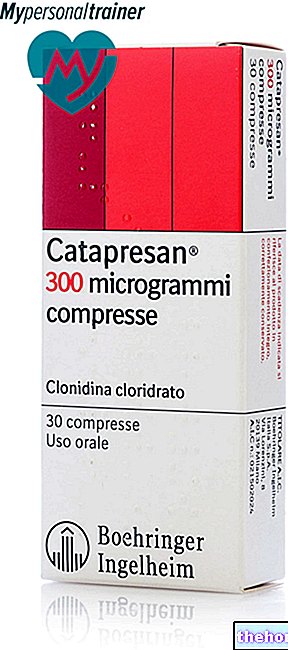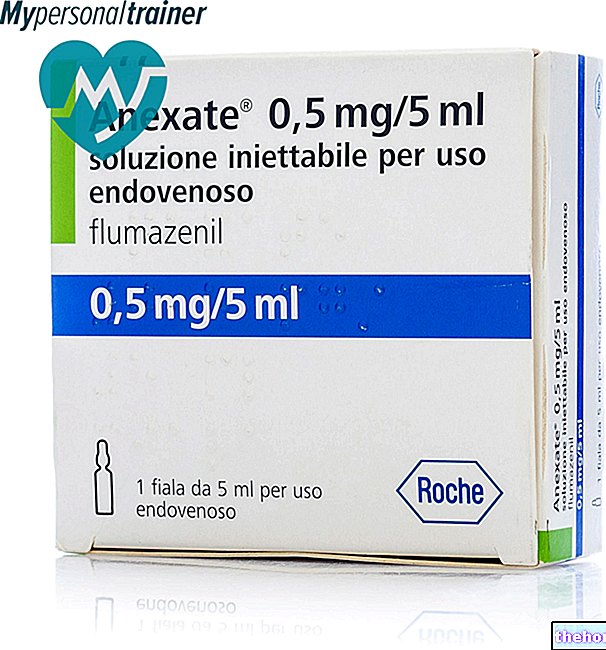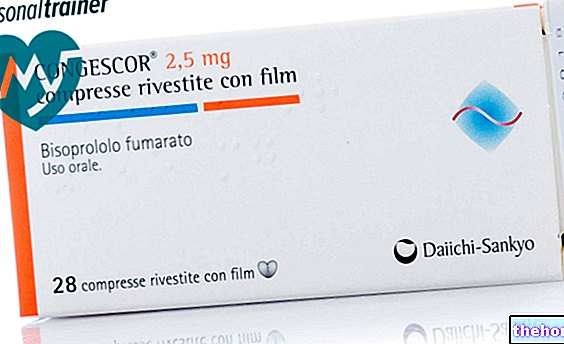Active ingredients: Albendazole
ZENTEL 400 mg Tablets
Why is Zentel used? What is it for?
PHARMACOTHERAPEUTIC CATEGORY
Anthelmintics - benzimidazole derivatives
THERAPEUTIC INDICATIONS
Intestinal infections
ZENTEL is a broad spectrum anthelmintic effective in the treatment of the following single or mixed intestinal parasites: Ascariasis, Enterobiasis, Ancylostomiasis, Necatoriasis, Tricuriasis, Strongyloidiasis, Teniasis, Hymenolepiasis, Opisthorchiasis, Clonorchiasis, Giardiasis in children.
The finding of a parasitic infestation in a member of a family or a community can lead to suspect a similar but latent infestation in the other members; under such conditions, treatment of all group members may be indicated.
Systemic infections
ZENTEL is indicated for the treatment of the following systemic helminthic infection: Echinococcosis.
ZENTEL shows the greatest efficacy in the treatment of hepatic, pulmonary and peritoneal cysts.
Experience with bone, heart and central nervous system cysts is limited.
Cystic Echinococcosis (caused by Echinococcus granulosus)
ZENTEL is used in patients with cystic echinococcosis in the following conditions:
- when surgery is not possible
- before surgery
- after surgery if the pre-operative treatment was too short, if there was an effusion or if vital material was found during the surgery
- following percutaneous drainage of cysts for diagnostic or therapeutic reasons.
Alveolar echinococcosis (caused by Echinococcus multilocularis)
ZENTEL is used in patients with alveolar echinococcosis in the following conditions:
- for inoperable diseases, particularly in cases of local or distant metastasis
- following palliative surgery
- following radical surgery or liver transplantation.
Contraindications When Zentel should not be used
Hypersensitivity to the active substance or to any of the excipients. ZENTEL should not be administered to infants, pregnant or suspected pregnant women and breastfeeding women.
Precautions for use What you need to know before taking Zentel
Intestinal infections
In order to avoid albendazole administration during early pregnancy, women of childbearing potential should initiate therapy no later than the first week after the onset of menstruation or after a negative pregnancy test.
Treatment with albendazole may reveal pre-existing neurocysticercosis, particularly in areas with a high prevalence of teniasis. Patients may have neurological symptoms, such as seizures, increased intracranial pressure, and focal signs, as a result of an inflammatory reaction caused by the parasite's death within the brain. Symptoms may appear soon after treatment, appropriate steroid therapy. and anticonvulsant should be started immediately.
Systemic infections
Albendazole has been shown to cause bone marrow suppression and therefore blood counts should be performed at the start of each cycle and every 2 weeks during each 28-day cycle.
Patients with liver disease, including hepatic echinococcosis, are more susceptible to bone marrow suppression leading to pancytopenia, aplastic anemia, agranulocytosis and leukopenia and therefore require closer monitoring of blood counts.Albendazole should be discontinued if clinically significant reductions in blood counts occur (see Dose, method and time of administration and Undesirable effects).
Other side effects associated with prolonged treatments are: hair loss, liver function alterations and mild to moderate increases in liver enzymes: these enzymatic alterations normalize upon discontinuation of treatment. Cases of hepatitis have been reported (see Undesirable effects). Liver function tests should be performed prior to the start of each treatment cycle and at least every two weeks during treatment. If enzymes increase significantly (more than double the upper limit of normal), ZENTEL should be discontinued. If liver enzymes return to normal levels, ZENTEL treatment can be resumed, but laboratory tests should be done more frequently during repeat therapy.
In order to avoid administration of ZENTEL during early pregnancy, women of childbearing potential must:
- start treatment only after a negative pregnancy test. These tests must be repeated at least once before starting the next cycle;
- be advised to take effective precautions against conception during and within one month of completing treatment with albendazole for a systemic infection.
Symptoms associated with an inflammatory reaction following parasite death may appear in patients being treated with albendazole for neurocysticercosis (e.g. seizures, increased intracranial pressure, focal signs). These can be treated with "appropriate steroid and anticonvulsant therapy."
The use of oral and intravenous corticosteroids is recommended to prevent cerebral hypertensive episodes during the first week of treatment.
Treatment with albendazole, in patients being treated with albendazole for other pathologies, may also reveal a pre-existing neurocysticercosis, particularly in areas with a high prevalence of teniasis.
Patients may have neurological symptoms, such as seizures, increased intracranial pressure, and focal signs, as a result of an inflammatory reaction caused by the parasite's death within the brain. Symptoms may appear soon after treatment, appropriate steroid therapy. and anticonvulsant should be started immediately.
Interactions Which drugs or foods can change the effect of Zentel
Tell your doctor or pharmacist if you have recently taken any other medicines, even those without a prescription.
Cimetidine, praziquantel and dexamethasone increase the plasma levels of the metabolite of albendazole responsible for the systemic efficacy of the product.
Ritonavir, phenytoin, carbamazepine and phenobarbital can reduce the plasma concentration of the active metabolite of albendazole; albendazole sulfoxide. Clinical relevance is unknown, but as a signal we can detect a decrease in efficacy, particularly in the treatment of systemic helminth infections. Patients should be monitored for efficacy and may require alternative therapy or dosing regimens.
Warnings It is important to know that:
Pregnancy and breastfeeding
Ask your doctor or pharmacist for advice before taking any medicine.
ZENTEL should not be administered to infants, women who are pregnant or suspected of pregnancy (see Contraindications and Precautions for use) and while breastfeeding.
There are no adequate human and animal data on use during lactation.
Effects on ability to drive and use machines
No effects on ability to drive or use machines have been observed.
Important information about some of the excipients
The medicine contains sunset yellow dye (E110) which may cause allergic reactions.
The medicine contains lactose, in case of ascertained intolerance to sugars contact your doctor before taking the medicine.
Dosage and method of use How to use Zentel: Dosage
Intestinal infections
Adults and children over 2 years old
As a rule, a dose of 1 tablet of ZENTEL 400 mg.
In case of infestations caused by Strongyloides stercoralis, Taenia spp. o Hymenolepis nana, this treatment must be repeated for three consecutive days. In case of proven Hymenolepis nana infestation, it is recommended to repeat the treatment after 10-21 days.
In the case of mixed infestations including Opistorchis viverrini and Chlonorchis sinensis the recommended dose of ZENTEL is 400 mg (1 tablet) twice a day for three consecutive days.
If the patient is still infested three weeks after administration, a second course of therapy is recommended.
In the case of giardiasis (only in children between 2 and 12 years of age) administer a single dose of 400 mg per day for 5 days.
Children aged 1 to 2 years
Clinical studies have documented the efficacy of 200 mg in the treatment of intestinal parasites caused by Ascaris lumbricoides, Ancylostoma duodenale, Trichuris trichiura, Necator americanus, Hymenolepis nana, Taenia saginata; in case of strongyloidosis, the administration must be repeated for three consecutive days.
Senior citizens
Experience in patients 65 years of age and older is limited. Reported cases indicate that no dosage adjustment is required, however, albendazole should be used with caution in elderly patients with signs of hepatic dysfunction (see Hepatic impairment. in this paragraph).
Kidney failure
Since the renal elimination of albendazole and its major metabolite, albendazole sulfoxide, is negligible, the clearance of these compounds is unlikely to be altered in such patients. No dosage adjustment is required, however, patients with signs of renal insufficiency must be carefully checked.
Hepatic insufficiency
Since albendazole is rapidly metabolised by the liver to its major pharmacologically active metabolite, albendazole sulfoxide, hepatic impairment is expected to have significant effects on the pharmacokinetics of albendazole sulfoxide. Patients with abnormal liver function (transaminase) results should be carefully monitored before treatment. initiate therapy with albendazole.
Systemic helminth infections
To date, there is limited experience with the use of albendazole in children under the age of six; therefore use in children under the age of six is not recommended.
Dosages depend on the parasites involved, the patient's weight and the severity of the infection:
Cystic Echinococcosis
Patients weighing more than 60 kg
1 tablet of 400 mg twice daily for a total of 28 days.
Patients weighing less than 60 kg
Total daily dose: 15 mg / kg administered in two equal divided doses (maximum dose 800 mg / day) for a total of 28 days.
This 28-day treatment cycle can be repeated, after a period of 14 days without any treatment, for a total of three cycles.
Alveolar echinococcosis
Patients weighing more than 60 kg
1 tablet of 400 mg twice daily for 28-day cycles, with a 14-day treatment-free interval between cycles.
Patients weighing less than 60 kg
Total daily dose: 15 mg / kg administered in two equal divided doses (maximum dose 800 mg / day) for 28-day cycles, with a 14-day treatment-free interval between cycles.
Treatment may need to be extended for months or years. Continuous treatment with the same dosage was carried out for periods of up to 20 months.
Senior citizens
Experience in patients 65 years of age and older is limited. Reported cases indicate that no dosage adjustment is required, however, albendazole should be used with caution in elderly patients with signs of hepatic dysfunction (see Hepatic impairment. in this paragraph).
Kidney failure
Since the renal elimination of albendazole and its major metabolite, albendazole sulfoxide, is negligible, the clearance of these compounds is unlikely to be altered in such patients. No dosage adjustment is required, however, patients with signs of renal insufficiency must be carefully checked.
Hepatic insufficiency
Since albendazole is rapidly metabolised by the liver to its major pharmacologically active metabolite, albendazole sulfoxide, hepatic impairment is expected to have significant effects on the pharmacokinetics of albendazole sulfoxide. Patients with abnormal liver function (transaminase) results should be carefully monitored before treatment. initiate therapy with albendazole and therapy should be discontinued if liver enzymes increase significantly or complete blood counts decrease to a clinically significant level (see Special warnings and precautions for use and Undesirable effects).
Method of administration
The tablets can be swallowed, chewed or broken and mixed with food. Some people, particularly younger children, may find it difficult to swallow tablets whole and should be encouraged to chew the tablets with some water, or alternatively the tablets can be crushed.
Intestinal infections
No special precautions are required, such as observing a fast or taking purgatives.
Systemic infections
ZENTEL should be taken with meals.
Cystic Echinococcosis
- Multiple and inoperable cysts
For the treatment of hepatic, pulmonary and peritoneal cysts, up to 3 28-day cycles of ZENTEL can be administered. For locations such as bones and the brain, longer treatment may be required.
- Pre-operative treatment
Before surgery, whenever possible, two 28-day courses should be administered. When surgery is to be performed before the completion of the two courses, ZENTEL should still be administered for as long as possible before surgery.
- Post-operative treatment
When only a short pre-operative course (less than 14 days) has been administered and in cases where emergency surgery is required, ZENTEL should be administered after the operation for two 28-day cycles with an interval of 14 days without treatment In addition, when cysts are viable after pre-operative treatment or when effusion has occurred, a complete treatment consisting of 2 cycles of 28 days should be administered.
- Treatment after percutaneous drainage of cysts
Treat as indicated above for the post-operative case.
Alveolar echinococcosis
Treatment with 28-day courses is usually recommended as for cystic echinococcosis. It may be necessary to continue for months or even years. The most recent remote control data suggests that survival times have substantially improved following treatment. prolonged.
Continued treatment in a limited number of patients has been shown to lead to apparent recovery.
Overdose What to do if you have taken too much Zentel
In case of accidental intake of an excessive dose of ZENTEL, notify your doctor immediately or go to the nearest hospital.
In the event of an overdose, symptomatic treatment (gastric lavage) should be used.
Additional treatments should be clinically indicated or recommended by a national poison control center, where available.
IF YOU HAVE ANY DOUBTS ABOUT USING ZENTEL, CONTACT YOUR DOCTOR OR PHARMACIST.
Side Effects What are the side effects of Zentel
Data from large clinical trials were used to determine the frequency, very common to rare, of undesirable effects. The frequencies established for all other undesirable effects (i.e. those occurring <1/1000) were mainly defined using post-marketing data and refer to the frequency of reported cases rather than the actual frequency.
The following convention was used for frequency classification:
- Very common ≥1 / 10
- Common ≥1 / 100 and <1/10
- Uncommon ≥1 / 1000 and <1/100
- Rare ≥ 1/10000 and <1/1000
- Very rare <1/10000
Use in intestinal infections (shorter duration of treatment and at lower doses)
Disorders of the immune system
Rare: hypersensitivity reactions, including rash, pruritus and urticaria
Nervous system disorders
Uncommon: headache and dizziness
Gastrointestinal disorders
Uncommon: upper gastrointestinal symptoms (e.g. epigastric or abdominal pain, nausea, vomiting) and diarrhea
Hepatobiliary disorders
Rare: increase in liver enzymes
Skin and subcutaneous tissue disorders
Very rare: erythema multiforme, Stevens Johnson syndrome
Use in systemic helminthic infections (longer duration of treatment and at higher doses)
Disorders of the blood and lymphatic system
Uncommon: leukopenia
Very rare: pancytopenia, aplastic anemia, agranulocytosis
Patients with liver disease, including hepatic echinococcosis, are shown to be more susceptible to bone marrow suppression (see Dose, method and time of administration and Precautions for use).
Disorders of the immune system
Uncommon: hypersensitivity reactions, including rash, pruritus and urticaria
Nervous system disorders
Very common: headache
Common: dizziness
Gastrointestinal disorders
Common: gastrointestinal disturbances (abdominal pain, nausea, vomiting)
Gastrointestinal disturbances have been associated with albendazole in the treatment of patients with echinococcosis.
Hepatobiliary disorders
Very common: mild to moderate increase in liver enzymes
Uncommon: hepatitis
Skin and subcutaneous tissue disorders
Common: Reversible alopecia (thinning and moderate hair loss)
Very rare: erythema multiforme, Stevens Johnson syndrome
General disorders and administration site conditions
Common: fever
Compliance with the instructions contained in the package leaflet reduces the risk of undesirable effects.
If any of the side effects gets serious, or if you notice any side effects not listed in this leaflet, please inform your doctor or pharmacist.
Expiry and Retention
Expiry: see the expiry date printed on the package.
The expiry date indicated refers to the product in intact packaging, correctly stored.
Warning: do not use the medicine after the expiry date shown on the package.
Special precautions for storage
This medicine does not require any special storage conditions.
KEEP THE MEDICINAL PRODUCT OUT OF THE REACH AND SIGHT OF CHILDREN
Deadline "> Other information
COMPOSITION
One tablet contains
- Active ingredient: albendazole 400 mg
- Excipients: lactose, corn starch, croscarmellose sodium, microcrystalline cellulose, povidone, vanilla flavor, orange flavor, magnesium stearate, passion fruit flavor, sodium lauryl sulfate, sodium saccharin, sunset yellow lake (E110)
PHARMACEUTICAL FORM AND CONTENT
Tablets. Box of 3 tablets of 400 mg.
Source Package Leaflet: AIFA (Italian Medicines Agency). Content published in January 2016. The information present may not be up-to-date.
To have access to the most up-to-date version, it is advisable to access the AIFA (Italian Medicines Agency) website. Disclaimer and useful information.
01.0 NAME OF THE MEDICINAL PRODUCT -
ZENTEL 400 mg - Tablets
02.0 QUALITATIVE AND QUANTITATIVE COMPOSITION -
One tablet contains:
Active principle: albendazole 400 mg
For excipients see section 6.1
03.0 PHARMACEUTICAL FORM -
Tablets.
04.0 CLINICAL INFORMATION -
04.1 Therapeutic indications -
Intestinal infections
ZENTEL is a broad spectrum anthelmintic effective in the treatment of the following single or mixed intestinal parasites:
• Ascariasis
• Enterobiasis
• Ancylostomiasis
• Necatoriasis
• Tricuriasis
• Strongyloidiasis
• Teniasis
• Hymenolepiasis
• Opistorchiasis
• Clonorchiasis
• Giardiasis in children
The finding of a parasitic infestation in a member of a family or a community can lead to suspect a similar but latent infestation in the other members; under such conditions, treatment of all group members may be indicated.
Systemic infections
ZENTEL is indicated for the treatment of the following systemic helminthic infection: Echinococcosis.
ZENTEL shows the greatest efficacy in the treatment of hepatic, pulmonary and peritoneal cysts.
Experience with bone, heart and central nervous system cysts is limited.
- Cystic Echinococcosis (caused by Echinococcus granulosus)
ZENTEL is used in patients with cystic echinococcosis in the following conditions:
1 - when surgery is not possible
2 - before surgery
3 - after the surgery if the pre-operative treatment was too short, if there was an effusion or if vital material was found during the operation
4 - following percutaneous drainage of cysts for diagnostic or therapeutic reasons
- Alveolar echinococcosis (caused by Echinococcus multilocularis)
ZENTEL is used in patients with alveolar echinococcosis in the following conditions:
1 - for inoperable diseases, especially in cases of local or distant metastasis
2 - following palliative surgery
3 - following radical surgery or liver transplant.
04.2 Posology and method of administration -
Intestinal infections
Adults and children over 2 years old
As a rule, a dose of 1 tablet of ZENTEL 400 mg.
In case of infestations caused by Strongyloides stercoralis, Taenia spp. o Hymenolepis nana, this treatment must be repeated for three consecutive days. In case of proven Hymenolepis nana infestation, it is recommended to repeat the treatment after 10-21 days.
In the case of mixed infestations including Opistorchis viverrini and Chlonorchis sinensis the recommended dose of ZENTEL is 400 mg (1 tablet) twice a day for three consecutive days.
If the patient is still infested three weeks after administration, a second course of therapy is recommended.
In the case of Giardiasis (only in children between 2 and 12 years of age) administer a single dose of 400 mg per day for 5 days.
Children aged 1 to 2 years
Clinical studies have documented the efficacy of 200 mg in the treatment of intestinal parasites caused by Ascaris lumbricoides, Ancylostoma duodenale, Trichuris trichiura, Necator americanus, Hymenolepis nana, Taenia saginata; in case of strongyloidosis, the administration must be repeated for three consecutive days.
Systemic helminth infections
To date, there is limited experience with the use of albendazole in children under the age of six; therefore its use in children under the age of six is not recommended. Dosages depend on the parasites involved, the patient's weight and the severity of the infection:
Cystic Echinococcosis
Patients weighing more than 60 kg: 1 tablet of 400 mg twice daily for a total of 28 days.
Patients weighing less than 60 kg: total daily dose: 15 mg / kg administered in two equal divided doses (maximum dose 800 mg / day) for a total of 28 days.
This 28-day treatment cycle can be repeated, after a period of 14 days without any treatment, for a total of three cycles.
Alveolar echinococcosis
Patients weighing more than 60 kg: 1 tablet of 400 mg twice daily for 28-day cycles, with an interval of 14 days without treatment between cycles.
Patients weighing less than 60 kg: total daily dose: 15 mg / kg administered in two equal divided doses (maximum dose 800 mg / day) for 28-day cycles, with an interval of 14 days without treatment between cycles.
Treatment may need to be extended for months or years. Continuous treatment with the same dosage was carried out for periods of up to 20 months.
How to use
The tablets can be swallowed, chewed or broken and mixed with food.
Intestinal infections
No special precautions are required, such as observing a fast or taking purgatives.
Systemic infections
ZENTEL should be taken with meals.
Cystic Echinococcosis
1 - Multiple and inoperable cysts
For the treatment of hepatic, pulmonary and peritoneal cysts, up to 3 28-day cycles of ZENTEL can be administered. For locations such as bones and the brain, longer treatment may be required.
2 - Pre-operative treatment
Before surgery, whenever possible, two 28-day courses should be administered.
When surgery is to be performed before the completion of the two cycles, ZENTEL should still be administered for as long as possible before surgery.
3 - Post-operative treatment
When only a short pre-operative course (less than 14 days) has been administered and in cases where emergency surgery is required, ZENTEL should be administered after the operation for two 28-day cycles with an interval of 14 days without treatment.
In addition, when cysts are viable after pre-operative treatment or when effusion has occurred, a complete treatment consisting of 2 cycles of 28 days should be administered.
3 - Treatment after percutaneous drainage of cysts
Treat as indicated above for the post-operative case.
Alveolar echinococcosis
Treatment with 28-day cycles is usually recommended as for cystic echinococcosis.
It may need to continue for months or even years. The most recent remote control data over time suggest that survival times have substantially improved following prolonged treatment.
Continued treatment in a limited number of patients has been shown to lead to apparent recovery.
04.3 Contraindications -
Known hypersensitivity to the product or to one of its components.
ZENTEL must not be administered to infants, women who are pregnant or presumed to be pregnant and are breastfeeding.
04.4 Special warnings and appropriate precautions for use -
Intestinal infections
In order to avoid albendazole administration during early pregnancy, women of childbearing potential should initiate therapy no later than the first week after the onset of menstruation or after a negative pregnancy test.
Systemic infections
Albendazole has been shown to cause bone marrow suppression (see section 4.8 - undesirable effects) and therefore a complete blood count should be performed at the start of each cycle and every 2 weeks during each 28 day cycle.
Patients with liver disease, including hepatic echinococcosis, are more susceptible to bone marrow suppression leading to pancytopenia, aplastic anemia, agranulocytosis and leukopenia and therefore require closer monitoring of blood counts. Albendazole should be discontinued if experience clinically significant reductions in blood counts (see Posology and method of administration And Side effects).
Other side effects associated with prolonged treatments are: hair loss, liver function alterations and mild to moderate increases in liver enzymes: these enzymatic alterations normalize upon discontinuation of treatment. Cases of hepatitis have been reported (see Side effects). Liver function tests should be performed prior to the start of each treatment cycle and at least every two weeks during treatment. If enzymes increase significantly (more than double the upper limit of normal), ZENTEL should be discontinued. If liver enzymes return to normal levels, ZENTEL treatment can be resumed, but laboratory tests should be done more frequently during repeat therapy.
In order to avoid administration of ZENTEL during early pregnancy, women of childbearing potential must:
- start treatment only after a negative pregnancy test. These tests must be repeated at least once before starting the next cycle.
- be advised to take effective precautions against conception during and within one month of completing treatment with albendazole for a systemic infection.
The tablets contain sunset yellow (E110) which can cause allergic reactions.
KEEP THE MEDICINAL PRODUCT OUT OF THE REACH AND SIGHT OF CHILDREN.
04.5 Interactions with other medicinal products and other forms of interaction -
Cimetidine, praziquantel and dexamethasone increase the plasma levels of the metabolite of albendazole responsible for the systemic efficacy of the product.
04.6 Pregnancy and breastfeeding -
ZENTEL must not be administered to infants, to women who are pregnant or presumed to be pregnant (see Section 4.3 - Contraindications and Section 4.4 - Special warnings and precautions for use) and during lactation.
There are no adequate human and animal data on use during lactation.
04.7 Effects on ability to drive and use machines -
No effects on the ability to drive or use machines were observed.
04.8 Undesirable effects -
Data from large clinical trials were used to determine the frequency, very common to rare, of undesirable effects. The frequencies established for all other undesirable effects (i.e. those that occurred
The following convention was used for frequency classification:
Very common ≥1 / 10
Common ≥ 1/100 e
Uncommon ≥1 / 1000 e
Rare ≥1 / 10,000 e
Very rare
Use in intestinal infections (shorter duration of treatment and at lower doses)
Disorders of the immune system
Rare: hypersensitivity reactions, including rash, pruritus and urticaria
Nervous system disorders
Uncommon headache and dizziness
Gastrointestinal disorders
Uncommon upper gastrointestinal symptoms (e.g. epigastric or abdominal pain, nausea, vomiting) and diarrhea
Hepatobiliary disorders
Rare increase in liver enzymes
Skin and subcutaneous tissue disorders
Very rare erythema multiforme, Stevens Johnson syndrome
Use in systemic helminthic infections (longer duration of treatment and at higher doses)
Disorders of the blood and lymphatic system
Uncommon leukopenia
Very rare pancytopenia, aplastic anemia, agranulocytosis
Patients with liver disease, including hepatic echinococcosis, are shown to be more susceptible to bone marrow suppression (see Posology and method of administration And Special warnings and precautions for use).
Disorders of the immune system
Uncommon: hypersensitivity reactions, including rash, pruritus and urticaria
Nervous system disorders
Very common headache
Common dizziness
Gastrointestinal disorders
Common gastrointestinal disturbances (abdominal pain, nausea, vomiting)
Gastrointestinal disturbances have been associated with albendazole in the treatment of patients with echinococcosis.
Hepatobiliary disorders
Very common mild to moderate increase in liver enzymes
Uncommon hepatitis
Skin and subcutaneous tissue disorders
Common reversible alopecia (thinning and moderate hair loss)
Very rare erythema multiforme, Stevens Johnson syndrome
General disorders and administration site conditions
Common fever
04.9 Overdose -
In the event of an overdose, symptomatic treatment (gastric lavage) and general supportive measures should be used.
05.0 PHARMACOLOGICAL PROPERTIES -
05.1 "Pharmacodynamic properties -
Pharmacotherapeutic group: Anthelmintics - benzimidazole derivatives
ATC code: P02CA03
Mechanism of action
Albendazole is a broad spectrum benzimidazole carbamate with anthelmintic and antiprotozoal activity against intestinal and tissue parasites. It has larvicidal, ovicidal and vermicidal activity, and exerts the anthelmintic effect by inhibiting tubulin polymerization. This causes alterations in helminthic metabolism, including energy depletion, which immobilize and thus kill sensitive helminths.
Pharmacodynamic effects
Intestinal infections
Albendazole is particularly effective in intestinal infections caused by the following helminths:
Nematodes: Enterobius vermicularis, Ascaris lumbricoides, Ancylostoma duodenale, Necator americanus, Trichuris trichiura, Strongyloides stercolaris and Cutaneous Larva Migrans. Cestodes: Hymenolepis nana, Taenia spp.
Trematodes: Opistorchis viverrini, Chlonorchis sinensis.
Albendazole has also been shown to be active against the following intestinal protozoa: Giardia lamblia (intestinalis or duodenalis).
Systemic infections
ZENTEL is effective in the treatment of tissue parasitic infections, including cystic echinococcosis and alveolar echinococcosis, caused by Echinococcus granulosus and Echinococcus multilocularis infestation, respectively.
In clinical studies, ZENTEL was able to eliminate cysts or significantly reduce their size, for percentages up to 80% of the total number of treated patients who had E. granulosus cysts.
After treatment with ZENTEL, where cysts were tested for viability, 90% were found to be nonviable in laboratory or animal studies compared to only 10% for untreated cysts.
In the treatment of cysts due to E. multilocularis, a minority of patients were considered cured, while the majority experienced improvement or stabilization of the disease thanks to ZENTEL therapy.
05.2 "Pharmacokinetic properties -
Absorption
Albendazole is poorly absorbed in humans (oral administration.
The systemic pharmacological effect of albendazole is enhanced if the dose is administered with a fatty meal, which increases absorption approximately 5-fold.
Distribution
Following oral administration of a single 400 mg dose of albendazole, the pharmacologically active metabolite, albendazole sulfoxide, achieved plasma concentrations of 1.6 to 6.0 μmol / liter when the product was given with breakfast.
Metabolism
Albendazole rapidly undergoes extensive first pass metabolism in the liver and is generally undetectable in plasma.
The major metabolite is albendazole sulfoxide, which is believed to be the pharmacologically active component in systemic tissue infections.
Elimination
The half-life of albendazole sulfoxide is 8.5 hours.
Albendazole sulfoxide and its metabolites are mainly eliminated via the biliary route; only a small amount via the urine.
The elimination from the cysts occurs over several weeks, after treatment with high doses for prolonged periods.
05.3 Preclinical safety data -
Albendazole was teratogenic and embryotoxic in rats and rabbits. It was neither mutagenic nor genotoxic.
06.0 PHARMACEUTICAL INFORMATION -
06.1 Excipients -
Lactose, corn starch, croscarmellose sodium, microcrystalline cellulose, povidone, vanilla flavor, orange flavor, magnesium stearate, passion fruit flavor, sodium laurilsulfate, sodium saccharin, sunset yellow lake (E110)
06.2 Incompatibility "-
Not relevant.
06.3 Period of validity "-
5 years.
06.4 Special precautions for storage -
No particular precautions.
06.5 Nature of the immediate packaging and contents of the package -
Aluminum / PVdC / PVC blister; pack of 3 tablets of 400 mg.
06.6 Instructions for use and handling -
See Paragraph 4.2.
07.0 HOLDER OF THE "MARKETING AUTHORIZATION" -
Laboratoire GlaxoSmithKline - 100, Route de Versailles - Marly-le-Roi Cedex (France)
Legal and sales representative: GlaxoSmithKline S.p.A. - Via A. Fleming, 2 - Verona
08.0 MARKETING AUTHORIZATION NUMBER -
ZENTEL 400 mg tablets - 3 tablets - A.I.C. n. 027096041
09.0 DATE OF FIRST AUTHORIZATION OR RENEWAL OF THE AUTHORIZATION -
01.12.89 / 01.06.05
10.0 DATE OF REVISION OF THE TEXT -
June 2008




























